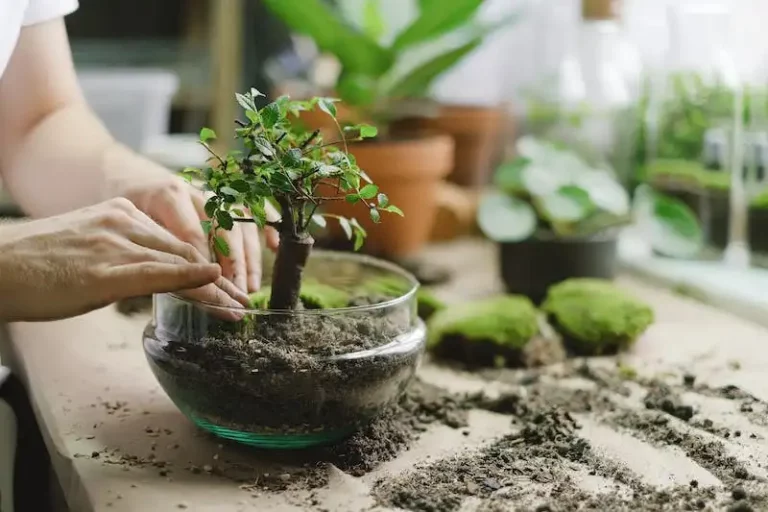The U.S. Food and Drug Administration (FDA) is a regulatory agency that ensures the safety, effectiveness, and security of human and veterinary drugs, vaccines, and other biological products. It also regulates the food supply, cosmetics, medical devices, and radiation-emitting products. The FDA plays a crucial role in protecting public health by preventing harm from unsafe products and promoting innovations in healthcare.
The FDA has a broad range of responsibilities, including conducting research, reviewing and approving new drugs, monitoring product safety, and enforcing regulations. The agency’s mission is to promote and protect public health by ensuring the safety, efficacy, and security of drugs, biological products, and medical devices. This includes the oversight of clinical trials, pre-market approvals, post-market surveillance, and the enforcement of regulations.
The FDA is committed to providing the public with accurate and up-to-date information about the products it regulates. The agency maintains a website with resources for consumers and healthcare professionals, including information about drug recalls, food safety alerts, and drug safety communications. The FDA also provides guidance on how to keep pets safe from harmful substances and what to do in case of poisoning.
For example, many people are unaware that certain plants can be toxic to pets. While some plants may cause only mild stomach upset, others can be life-threatening. One such example is the lily, which is highly toxic to cats. Even a small ingestion of a lily plant can lead to acute kidney failure in cats. It is important for cat owners to be aware of the dangers and to keep lilies out of their homes or gardens. If a cat does happen to ingest a lily, it is a medical emergency and immediate veterinary treatment should be sought.
Spring is a time when many people start gardening and treating their yards for insects. It is important to be aware that some insecticides and rodenticides can be harmful to pets. When using these products, it is important to keep pets away from the treated area and to follow the instructions on the label. If a pet does come into contact with a harmful substance, it is important to contact a veterinarian for advice on what to do.
In addition to plants and pesticides, there are many other substances that can be harmful to pets. For example, some human medications can be toxic to pets, especially cats and dogs. Certain foods, such as chocolate, onions, and grapes, can also be toxic to pets. It is important for pet owners to be aware of these dangers and to keep them out of reach of their curious and lovely furry friends.
403 ERROR
While the U.S. Food and Drug Administration (FDA) is responsible for protecting public health by ensuring the safety, efficacy, and security of human and veterinary drugs, there are certain dangers that they’re unable to control, like plant toxicity.
When it comes to plant toxicity, one example of a dangerous plant is the daylily (Hemerocallis species). If a cat happens to ingest any part of this plant, it can start showing signs of poisoning within a few hours to a day. The daylilies are not toxic to humans, but they can be dangerous to cats.
If a cat is suspected of daylily poisoning, it’s important to seek quick treatment. The lily plant is toxic to the kidneys, and time is of the essence when it comes to treating this type of poisoning. The sooner treatment is started, the better the prognosis for the cat.
It’s important to learn about the various toxic plants that can harm cats and take necessary precautions to prevent their ingestion. While daylilies are less toxic than true lilies from the Lilium genus, it’s still important to be careful when it comes to any plant ingestion, as the combination of plants or other factors can make poisoning more severe.
If a cat shows early signs of poisoning, such as vomiting or diarrhea, it’s important to contact a veterinarian. In the case of daylilies, if a cat chews on the plant in the spring or early summer, it must be treated as a medical emergency.
Ingestion of any part of the daylily plant, including flowers and leaves, can be toxic to cats. The toxins can quickly get into their system and cause damage to their kidneys. Drinking water or inducing vomiting may not be enough to prevent poisoning.
To be safe, it’s best to start treatment as soon as possible and contact a veterinarian. While learning about potentially poisonous plants can help protect cats, it’s also important to keep these plants out of their reach.
It’s worth noting that other species, such as the true lilies, can be even more toxic to cats. Clinical signs of true lily poisoning can include vomiting, loss of appetite, depression, lethargy, and even acute kidney failure. The ingestion of only a small amount of the plant can be life-threatening to a cat.
It’s crucial to be aware of what plants are toxic to cats and take steps to prevent their ingestion. Proper control and drainage in garden areas can also help decrease the risk of exposure to toxic plants. Educating oneself about the dangers of certain plants can go a long way in keeping cats safe and healthy.
Lovely Lilies and Curious Cats A Dangerous Combination
Cats are curious creatures, always exploring their environment and getting into things they shouldn’t. Unfortunately, one thing they may come across is the beautiful lily flower, which can be extremely toxic to them.
Lilies, including the Easter Lily, Tiger Lily, and Asiatic Lily, contain toxins that are highly poisonous to cats. Even a small amount of lily poison can be enough to kill a cat. The petals, leaves, and even the pollen of the lily are all toxic to cats.
If your cat ingests any part of a lily plant, it is crucial to seek immediate veterinary care. Waiting too long can result in irreversible kidney damage and even death. The first signs of lily poisoning in cats include vomiting, diarrhea, and lack of appetite. If left untreated, the toxins can cause kidney failure and eventually lead to death.
When it comes to treating lily poisoning in cats, time is of the essence. You should bring your cat to a veterinary clinic as soon as possible, as they may need to induce vomiting or administer activated charcoal to absorb the toxins. In more severe cases, hospitalization and supportive care, such as intravenous fluids and medication, may be necessary.
In order to protect your curious cat, it’s important to be aware of the potential dangers of lilies. Keep lilies out of your home and garden, and avoid bringing lilies into your house, especially during celebrations like Easter and Mother’s Day, when they are commonly used. If you do have lilies in your home, make sure they are in an area where your cat cannot access them.
It’s also essential to educate yourself and others about the risks associated with lilies and cats. Share this information with your friends, family, and pet care centers. By raising awareness, you can help prevent future incidents and keep cats safe from lily poisoning.
If you suspect that your cat has ingested a lily or is showing signs of poisoning, don’t wait. Contact your veterinarian immediately or call an animal poison control center, such as the ASPCA Animal Poison Control Center at 1-888-426-4435. The quicker you seek help, the higher the chances of a successful treatment for your beloved pet.
Highly Toxic Lilies for Cats
Generally, cats are curious and love to explore their surroundings. However, they may not always be aware of the dangers that some common household items or plants can present to them, such as highly toxic lilies. It is important for cat owners to be aware of the potential risks associated with lilies and take necessary precautions to keep their feline friends safe.
Learning about dangerous plants and keeping them out of your cat’s reach is crucial. The U.S. Food and Drug Administration (FDA) website provides valuable information on toxic plants and other potential hazards for pets.
Lilies are particularly poisonous to cats, and ingestion of any part of the plant can be fatal. Even a small amount can cause severe toxicity. It is important to know the name and appearance of these toxic lilies to prevent any accidental poisoning.
If you suspect your cat has ingested a toxic lily, time is of the essence. Waiting for symptoms to appear may be too late. Contacting a veterinarian or a poison control center immediately is crucial in diagnosing and treating the poisoning.
| Poison Control Centers | Contact Information |
|---|---|
| National Animal Poison Control Center | 1-888-426-4435 |
| ASPCA Animal Poison Control Center | 1-888-426-4435 |
Lilies come in various types, including the Easter lily (Lilium longiflorum) and the Peruvian lily (Alstroemeria). Both are highly toxic to cats. The ingestion of these lilies can result in severe damage to the kidneys, which can be life-threatening for cats.
If you have lilies in your home, it is safer to remove them altogether to eliminate the risk. Additionally, it is important to educate yourself on what plants are dangerous for pets and ensure they are not present in and around your home.
Cats are curious by nature, and they may be attracted to plants in the springtime. It is crucial to be careful and celebrate the season without putting your pet at risk.
Remember, prevention is the best course of action when it comes to toxic plant poisoning. By knowing what plants are harmful and keeping them out of your cat’s reach, you can ensure the safety and well-being of your feline companion.
Other Highly Toxic “Lilies” for Cats and Dogs
While many people know about the dangers of lilies for cats and dogs, there are other types of “lilies” that can also be highly toxic to our beloved pets. Although they are not true lilies, these plants can still be dangerous if ingested and may even cause death.
One example is the Lily-of-the-Valley, which is a small, perennial plant that is commonly found in gardens. Its toxins are more concentrated in the flowers and leaves, so if your pet bites or chews on this plant, you should seek immediate veterinary treatment. Lily-of-the-Valley poisoning can cause symptoms such as vomiting, diarrhea, and an irregular heartbeat. Without prompt treatment, it can be fatal.
Another plant that is toxic to cats and dogs is the Peruvian Lily, also known as Alstroemeria. This plant contains toxins that can cause gastrointestinal upset, including vomiting and diarrhea. In more severe cases, it can even affect the pet’s central nervous system. If your pet ingests this plant, it is important to contact your veterinarian for quick treatment.
If you are unsure about the toxicity of a specific plant, it is always better to err on the side of caution and keep it away from your pets. Remember, prevention is key when it comes to protecting our furry friends from dangerous toxins.
If you suspect your pet has ingested any toxic plants, visit the website of the U.S. Food and Drug Administration or call your veterinarian for guidance. They can provide you with resources and information on how to handle the situation.
It is important to note that the prognosis for lily poisoning in cats is poor, especially if treatment is delayed. Cats are highly susceptible to the toxins found in lilies, and even a small amount can be fatal. Dogs, on the other hand, may show signs of toxicity but are usually less affected than cats. However, it is still crucial to seek treatment as soon as possible if your pet has ingested any toxic plants.
Learning to identify and prevent toxic plant ingestion is essential for the health and safety of our pets. By staying informed and keeping plants out of reach, we can ensure their well-being and peace of mind.




